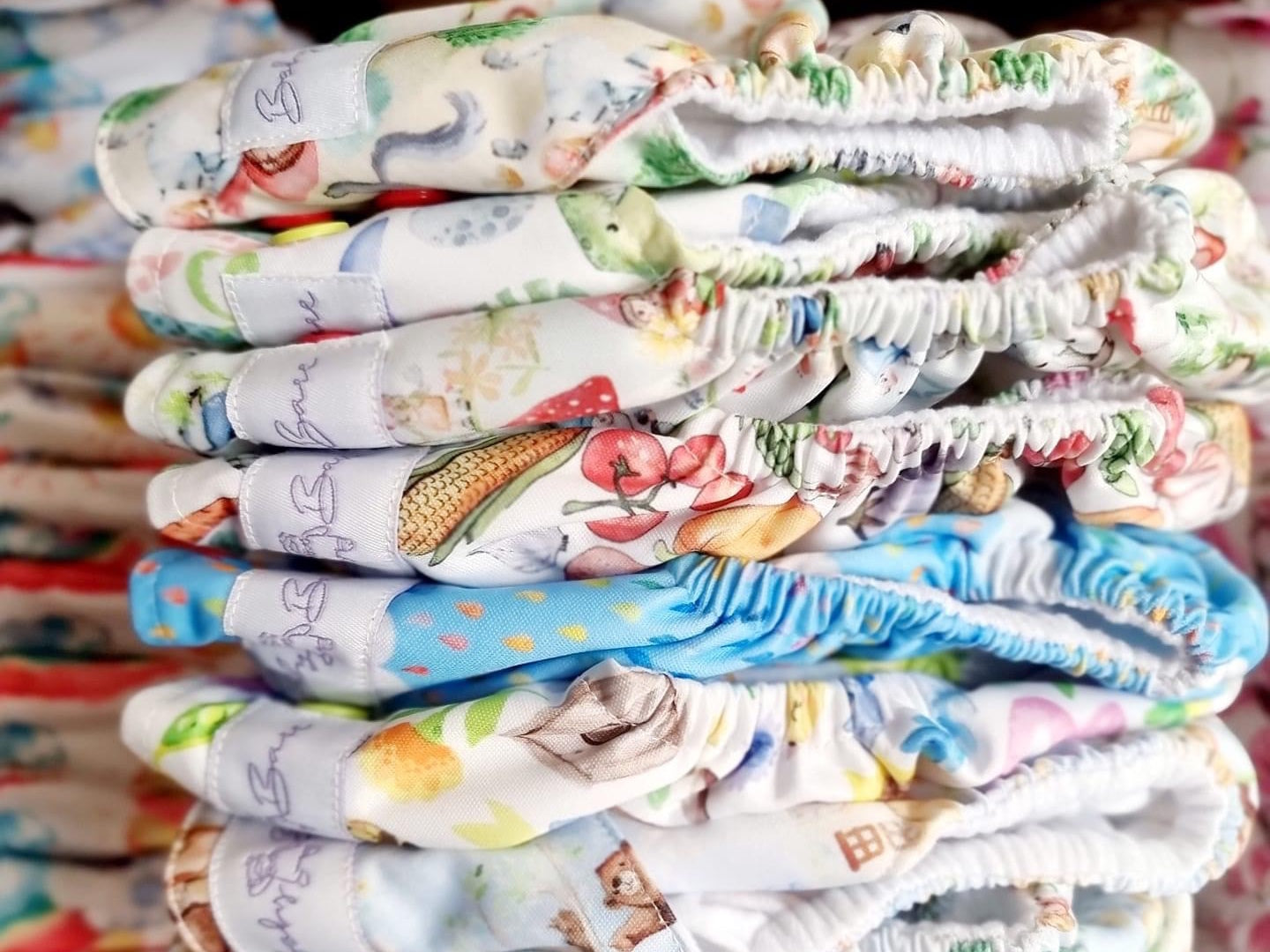Having worked in the cloth nappy industry for over 13 years, I often find myself having to defend not only my choice to have used cloth nappies, but selling them.
I am not sure if people feel they need to defend their choice to use disposables or they are hoping to convince themselves, but I am often told cloth nappies are more harmful for the environment then disposables. Reasons include that manufacturing them takes resources, washing them requires resources and simply that its just too much work.
This article is intended to give some background to why I believe cloth nappies are a mosre sustainable choice.
The Environmental Toll of Disposable Nappies
- Massive Waste Generation: Disposable nappies are designed for single use, and they contribute significantly to landfill waste. In fact, it’s estimated that a single baby can go through 5,000 to 7,000 nappies in their first two to three years. Given that disposable nappies can take up to 500 years to decompose, this leads to an enormous pile of waste that is not only unsightly but also harmful to the environment.
- Resource-Intensive Production: Not only is the final use to be considered when thinking about the environmental impact, but the manner in which disposables are made, transported and packaged. The production of disposable nappies requires significant amounts of natural resources. The process involves using wood pulp (derived from trees), plastic, and various chemicals, which means that every pack of nappies has a substantial carbon footprint. Furthermore, the energy-intensive manufacturing process contributes to greenhouse gas emissions, exacerbating climate change. Nappies are often wrapped in plastic packaging and made overseas. This further adds to the waste and resources required to get them to their final intended use.
- Chemical Pollution: Disposable nappies often contain harmful chemicals, including chlorine, fragrances, and absorbent gels. When disposed of, these chemicals can leach into the soil and groundwater, posing risks to wildlife and ecosystems. The production process itself can also lead to air and water pollution, further endangering local environments. Further is the obvious issue that nappies are not always disposed of appropriately. Being thrown into waterways and bushland is also another issue faced.
- Microplastic Pollution: As disposable nappies break down in landfills, they can contribute to the growing problem of microplastic pollution. These tiny plastic particles can seep into ecosystems, affecting marine life and ultimately entering the food chain. This adds a layer of complexity to environmental degradation and presents a health risk to animals and humans alike.
- Disposal of nappies: Nappies are often wrapped in plastic bags or special plastic nappy wraps to ensure the smell is contained. This further adds to the waste produced.
The Benefits of Choosing Cloth Nappies
- Reduced Waste: Cloth nappies are reusable. Of course there is resources that go into making them, but one nappy can be used hundreds of times, not just once. By making the switch, parents can significantly reduce the number of nappies sent to landfills. Some estimates suggest that using cloth nappies can prevent over a ton of waste per child.
- Lower Resource Consumption: Although cloth nappies do require resources to produce, their long lifespan and reusability mean that the overall resource consumption is drastically lower compared to disposables. Many cloth options are made from organic cotton or bamboo, which can be produced sustainably and will also break down easily.
- Chemical-Free Options: Most cloth nappies are free from the harmful chemicals found in disposable nappies. This is especially beneficial for babies with sensitive skin or allergies.
- Cost-Effective: While the initial investment in cloth nappies may seem high, they can save parents a significant amount of money in the long run. After the initial purchase, the ongoing costs are minimal compared to the continual expense of buying disposable nappies. Additionally, cloth nappies can be reused for subsequent children or resold, further extending their value.
- Sustainable Practices: Many brands of cloth nappies are dedicated to sustainability, using eco-friendly materials and ethical manufacturing practices. Choosing these brands can support environmentally-conscious businesses and promote a more sustainable economy.
Making the Switch
Transitioning from disposable to cloth nappies might seem daunting at first, but with a little planning and preparation, it can be a smooth process. Here are some tips to help:
- Start Small: Consider starting with a few cloth nappies and gradually increasing your stash as you become more comfortable with the routine. You do not need to feel that you must buy a full set and be all or nothing.
- Try Different Types: There are various styles of cloth nappies (pocket, all-in-one, prefold, etc.). Experiment to find what works best for your baby and your lifestyle. Finding the right nappy will help ensure you succeed.
- Invest in a Good Wash Routine: Establish a laundry routine that works for you. Most cloth nappies can be washed alongside regular laundry, making it easier to incorporate them into your household chores.
Conclusion
Choosing between disposable and cloth nappies is not just a matter of convenience; it’s a decision that can have significant implications for the environment. While disposable nappies may offer short-term ease, their long-lasting effects on the planet are a cause for concern. Cloth nappies present a sustainable alternative that benefits both the environment and your family.
If you want to get into cloth, we recommend trying a few nappies and discovering what you like most. Baby Bare offers a range of different styles that are affordable making it easier to make the switch.

